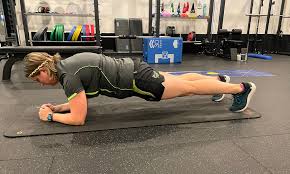LAHORE SPINE CARE
A core strength is not just about looking good in a swimsuit; it also has a lot to do with maintaining overall spine stability and long-term back health. When people say core, they mean your abdominals, but it’s more than that – the so-called six-pack of muscle, which includes muscles in our back and sometimes pelvis & hips. They work together to stabilize your spine, pelvis and kinetic chain, thereby impacting the way you hold yourself up (posture), keep your center of gravity above your base support (stability), and control leverage in daily activities so things are done without too much effort or injury.

Table of Contents
ToggleThe Concept of Core Strength and Spine Stability
Core strength indicates this central support and stability for the spine and pelvis during dynamic movement as well as static positions. A strong core:
1. Promotes & Maintain Correct Posture: having weak or overdeveloped muscles around the spine can lead poor posture
and strong. Core muscles help you stand and sit upright with minimal effort, reducing strain on the spine.


2. Reduces Risk of Injury: Weak core muscles can lead to poor posture, which in turn can increase the risk of injuries such as strains, sprains, and even more serious conditions like herniated discs.
3. Improves Balance and Stability: Core muscles are essential for balance and stability, whether you’re standing, walking, or engaging in sports. They help distribute your body weight evenly and react to changes in movement.
Benefits of Core Strength for Spine Health
1. Prevents Back Pain: Many people experience back pain due to weak core muscles. Strengthening these muscles can alleviate discomfort by providing better support for the spine and reducing the load on the back muscles.
2. Enhances Athletic Performance: Athletes across various disciplines rely on core strength for power generation, endurance, and injury prevention. A strong core improves overall athletic performance and reduces the risk of sports-related injuries.
3. Supports Functional Movements: Daily activities such as bending, lifting, twisting, and reaching all require a stable core. Strengthening these muscles can make these movements more efficient and less taxing on the spine.
Exercises to Build Core Strength
1. Plank Variations: Planks engage multiple core muscles simultaneously. Start with basic planks and progress to side planks and plank variations using stability balls or weights.
2. Bridge Exercises: Bridges target the lower back, glutes, and core muscles. They improve pelvic stability and strengthen the muscles that support the spine.


3. Pilates and Yoga: These disciplines emphasize core strength, flexibility, and posture. Incorporating Pilates or yoga into your routine can significantly enhance core stability and spine health.
4. Resistance Training: Exercises such as deadlifts, squats, and overhead presses engage the core muscles as stabilizers. Proper form is crucial to prevent injury and maximize benefits.

Incorporating Core strength Work into Your Routine
To reap the benefits of core strength for spine stability, aim for regular exercise that targets these muscles. Start with exercises that match your current fitness level and gradually increase intensity and complexity. Consistency is key to developing and maintaining core strength over time.
In conclusion, strong core muscles are essential for maintaining spine stability, preventing injuries, and enhancing overall physical performance. Whether you’re an athlete, a fitness enthusiast, or someone looking to improve posture and alleviate back pain, prioritizing core strength can significantly contribute to your long-term health and well-being.
For more tips on fitness and health, stay tuned to our blog or contact us for personalized guidance on incorporating core strengthening exercises into your fitness routine. Your spine will thank you for it!

This blog post is crafted by Lahore Spine Care to emphasize the importance of core strength for spine stability while providing actionable insights and exercise tips.
LAHORE SPINE CARE is proudly powered by WordPress